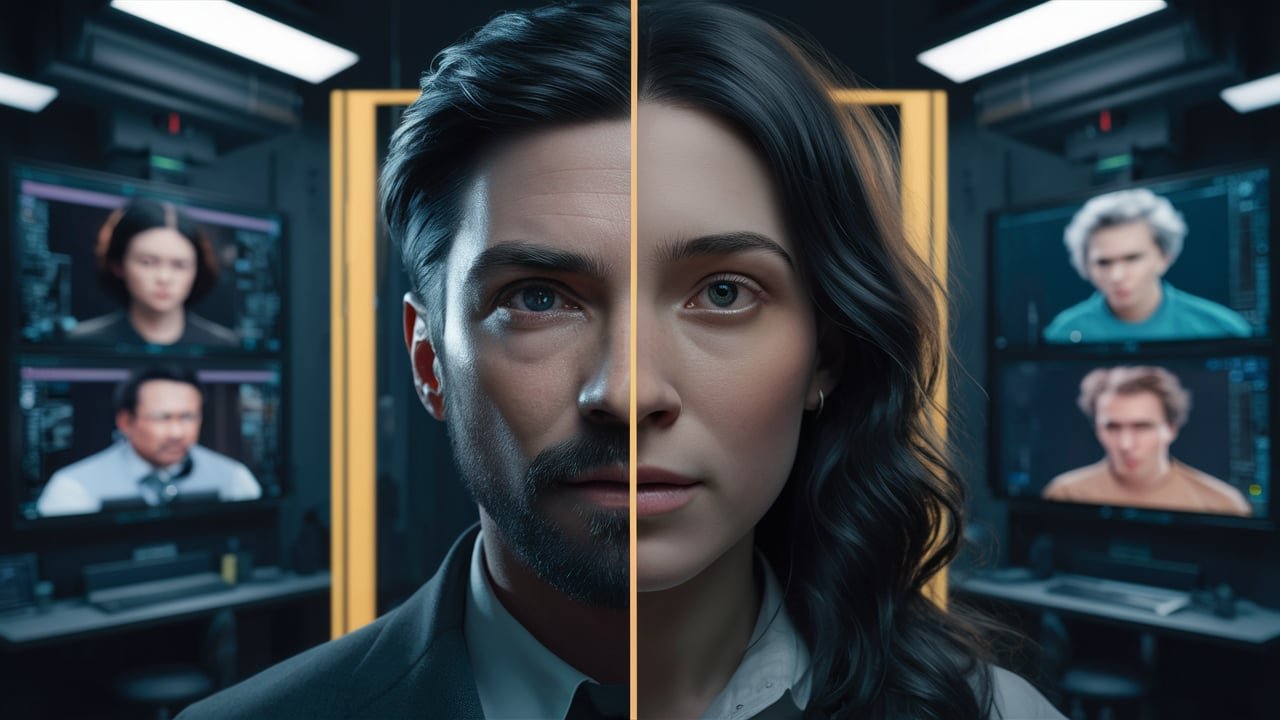Introduction: Deep Fake Technology
Definition of Deep Fake Technology
Deep fake technology refers to the use of artificial intelligence (AI) and machine learning (ML) to create hyper-realistic videos, audio, or images that appear to be genuine but are entirely fabricated. This technology leverages advanced algorithms to manipulate media, often blending real footage with synthetic elements to produce convincing but deceptive content.
Importance and Relevance
The emergence of deep fake technology has significant implications across various sectors. It raises profound ethical and security concerns, particularly regarding misinformation, privacy invasion, and the erosion of trust in digital media. Understanding deep fakes is crucial in today’s digital age, where the authenticity of visual and audio content can no longer be taken at face value.
Historical Background
The concept of synthetic media has been around for decades, but deep fake technology as we know it today began to gain traction in the early 2010s. Early iterations were rudimentary, often requiring significant manual input. However, with advancements in deep learning and neural networks, the quality and accessibility of deep fakes have improved dramatically. The term “deep fake” itself is derived from the combination of “deep learning” and “fake,” highlighting the AI-driven nature of the technology.
Technical Specifications
Underlying Technologies
Deep fakes rely heavily on neural networks, particularly Generative Adversarial Networks (GANs). GANs consist of two neural networks: the generator and the discriminator. The generator creates synthetic data, while the discriminator evaluates its authenticity. Through iterative feedback loops, GANs refine the quality of the generated content, making it increasingly realistic.
Machine Learning Algorithms
Beyond GANs, deep fake creation involves various machine learning techniques, including autoencoders and reinforcement learning. Autoencoders compress and reconstruct data, enabling the transformation of one person’s facial expressions onto another’s face. Reinforcement learning, on the other hand, optimizes the performance of neural networks through reward-based training.
Hardware Requirements
Creating deep fakes demands substantial computational power. High-end graphics processing units (GPUs) are essential for handling the intensive calculations involved in training neural networks. Additionally, large datasets of images or videos are required to train the models effectively, making storage and data management crucial components.
Applications
Entertainment Industry
In film and television, deep fake technology offers innovative possibilities for visual effects, such as de-aging actors or resurrecting deceased performers for new roles. It also enables the creation of realistic avatars and digital doubles, enhancing storytelling capabilities.
Political Landscape
Deep fakes pose significant risks in politics, where they can be used to spread misinformation, manipulate public opinion, or discredit opponents. The ability to fabricate convincing speeches or actions of political figures has raised alarm over the potential for deep fake-driven propaganda.
Social Media
The widespread use of social media platforms has facilitated the rapid dissemination of deep fake content. This can lead to viral misinformation, cyberbullying, and identity theft. However, social media companies are increasingly implementing detection and reporting mechanisms to combat the spread of malicious deep fakes.
Education and Training
In education, deep fakes can create immersive learning experiences, such as historical reenactments or interactive simulations. They also offer potential in training environments, where realistic scenarios can enhance the effectiveness of skills development and practice.
Advertising
Advertisers can leverage deep fake technology to create personalized and engaging marketing campaigns. By tailoring content to individual preferences and behaviors, brands can enhance their connection with consumers, potentially increasing engagement and conversion rates.
Benefits
Enhancing Creativity
Deep fake technology opens new avenues for artistic expression and creativity. Filmmakers, artists, and content creators can experiment with novel forms of storytelling and visual effects, pushing the boundaries of what is possible in digital media.
Cost-Effectiveness
By enabling realistic visual effects without the need for costly practical effects or physical actors, deep fakes can significantly reduce production costs in film, television, and advertising. This democratizes access to high-quality media production, allowing smaller creators to compete with major studios.
Improved Training Simulations
In fields such as medicine, aviation, and military training, deep fakes can create highly realistic simulations for practice and assessment. This enhances the preparedness and competence of professionals by providing hands-on experience in a controlled, risk-free environment.
Challenges and Limitations
Ethical Concerns
The ability to create convincing fake content raises profound ethical questions. Deep fakes can be used for malicious purposes, such as creating non-consensual explicit content, defaming individuals, or perpetrating fraud. Establishing ethical guidelines and regulatory frameworks is essential to mitigate these risks.
Legal Issues
Current legal systems are often ill-equipped to handle the complexities of deep fake technology. Intellectual property rights, privacy laws, and defamation statutes must evolve to address the unique challenges posed by synthetic media. Ensuring accountability and legal recourse for victims of deep fakes is a critical area of ongoing development.
Technological Limitations
Despite significant advancements, deep fake technology is not without its limitations. Creating high-quality deep fakes requires extensive computational resources and expertise, which can limit accessibility. Additionally, subtle imperfections often betray the synthetic nature of deep fakes, though these flaws are becoming increasingly difficult to detect.
Detection Difficulties
As deep fake technology advances, so too does the sophistication of detection methods. However, the ongoing arms race between creators and detectors of deep fakes presents a significant challenge. Developing robust, scalable detection algorithms that can keep pace with evolving deep fake techniques is crucial to maintaining the integrity of digital media.
Latest Innovations
Recent Advancements
Recent developments in deep fake technology include improved GAN architectures, enhanced facial recognition algorithms, and more efficient training methods. These innovations have led to higher quality and more realistic deep fakes, expanding their potential applications and impact.
Case Studies
Case studies of deep fake applications, such as the use of synthetic media in blockbuster films or high-profile political incidents, provide valuable insights into the technology’s capabilities and limitations. Analyzing these real-world examples helps to understand the practical implications of deep fakes.
Breakthrough Technologies
Breakthroughs in related fields, such as natural language processing (NLP) and computer vision, are continually feeding into deep fake technology. These advancements enhance the ability to create more nuanced and contextually accurate deep fakes, broadening their potential uses.
Future Prospects
Predicted Developments
Experts predict that deep fake technology will continue to evolve, becoming more accessible and sophisticated. This could lead to widespread use in everyday applications, such as personalized virtual assistants, augmented reality experiences, and more.
Long-Term Implications
The long-term implications of deep fake technology are profound. As the line between real and synthetic media blurs, society must grapple with issues of trust, authenticity, and the potential for widespread misinformation. Ongoing research and policy development will be critical in navigating these challenges.
Comparative Analysis
Comparison with Traditional Media
Compared to traditional media production methods, deep fakes offer greater flexibility and creativity but also come with increased risks of misuse. Understanding the trade-offs between these approaches is essential for responsible and effective use.
Comparison with Other AI Technologies
Deep fake technology shares commonalities with other AI-driven innovations, such as virtual reality (VR) and augmented reality (AR). Comparing these technologies highlights their unique strengths and weaknesses, informing decisions about their respective applications.
User Guides and Tutorials
Basic Tutorial on Creating Deep Fakes
For those interested in creating deep fakes, a step-by-step guide covering the basics of data collection, model training, and video synthesis provides a practical introduction. This section should include safety and ethical considerations to ensure responsible use.
Advanced Techniques
Advanced users can benefit from tutorials on more sophisticated techniques, such as fine-tuning neural networks, integrating audio and video synthesis, and enhancing realism through post-processing. Sharing best practices and tips from experts can help elevate the quality of deep fake creations.
Conclusion
Recap of Key Points
Deep fake technology represents a significant advancement in AI and media manipulation, with diverse applications and profound implications. From entertainment and education to politics and advertising, its impact is wide-ranging and complex.
Future Implications
As deep fake technology continues to evolve, society must address the associated ethical, legal, and technological challenges. Ensuring responsible use while leveraging the technology’s potential benefits will require ongoing collaboration between technologists, policymakers, and the public.
Call to Action for Further Research
To fully understand and harness the potential of deep fake technology, further research is essential. This includes developing more effective detection methods, creating robust legal frameworks, and exploring new applications that can benefit society.




